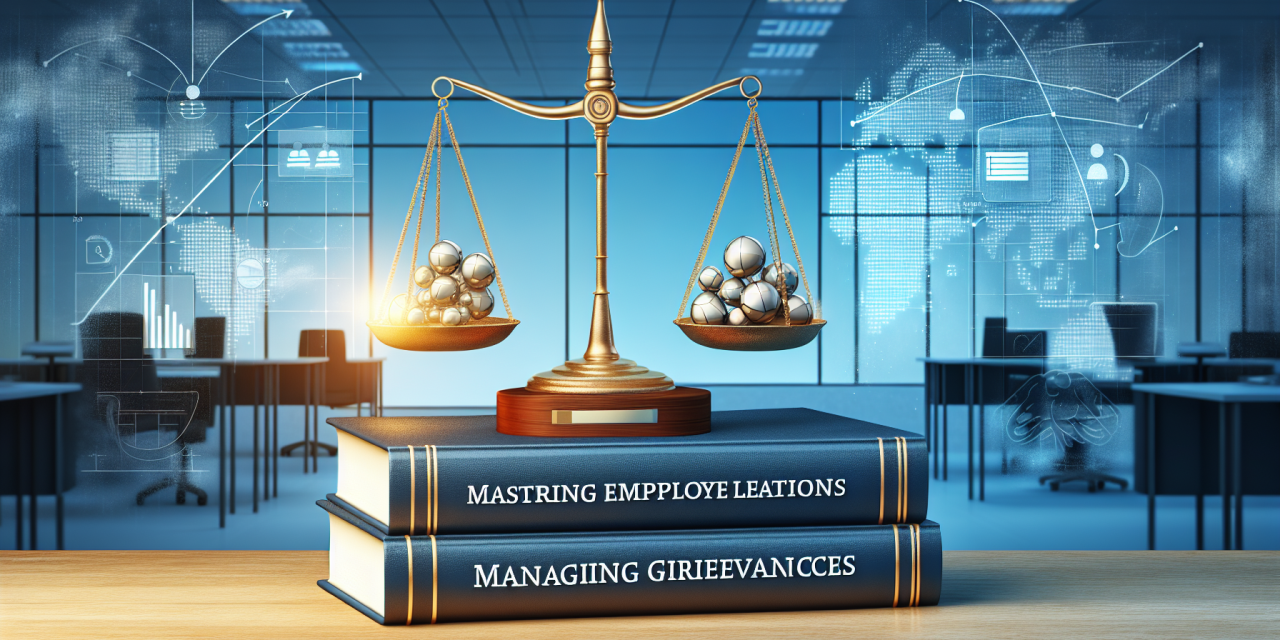- Introduction
- Understanding Employee Relations
- The Role of Motivation
- Managing Grievances
- Maintaining Discipline
- Practical Tips for Managing Employee Relationships
- Conclusion
- FAQs
Introduction
Establishing a harmonious workplace is not just about managing tasks but also about cultivating positive employee relationships. In today’s dynamic work environment, understanding the interplay of relations, motivation, grievances, and discipline becomes even more crucial. This blog will guide you through these essential elements of Certified Employee Relationship Management.
Understanding Employee Relations
To begin with, employee relations encompass the relationship between employers and employees. This intricate connection is the backbone of any organization, guiding the workplace culture and overall effectiveness. With strong employee relations, organizations reap numerous benefits, including enhanced productivity, reduced turnover, and a collaborative environment.
Moreover, the idea of employee relations is not merely about maintaining peace; it involves actively engaging with employees, addressing their concerns, and fostering an atmosphere of trust and mutual respect. Thus, investing in skilled management of employee relations can significantly elevate workplace dynamics. For a deeper understanding, explore the Certified Employee Relationship & Motivation Management Course.
The Role of Motivation
Motivation is a driving force that propels employees to perform better. Understanding what motivates employees can significantly influence their productivity and loyalty. Essentially, motivation can be intrinsic or extrinsic. Intrinsic motivation arises from within the individual, fueled by personal satisfaction and the desire for self-improvement. In contrast, extrinsic motivation derives from external factors, such as financial rewards or recognition.
Fostering Intrinsic Motivation
Creating an environment conducive to intrinsic motivation starts with recognizing employees’ unique strengths. By encouraging them to pursue their passions, organizations can enhance engagement and job satisfaction. Leadership plays a pivotal role in this; managers should lead by example, demonstrate appreciation for effort, and recognize accomplishments.
Utilizing Extrinsic Motivators
Meanwhile, external rewards, such as bonuses or public recognition, can serve as effective motivators. However, it’s crucial to strike a balance; employees should feel recognized without being dependent solely on rewards. This balance helps sustain motivation over the long term.
Managing Grievances
Grievances are bound to arise in any workplace, particularly where interpersonal interactions take place. Therefore, having a structured grievance management system is essential. When grievances go unaddressed, they can lead to escalating tensions, decreased morale, and increased turnover rates.
The Importance of Listening
Firstly, creating a culture where employees feel heard is fundamental. Encourage open dialogue, and assure employees that their insights matter. When employees see that management values their feedback, they are more likely to communicate issues early on, thus preventing conflicts from escalating.
Implementing Clear Processes
Secondly, organizations should develop and communicate clear procedures for addressing grievances. Employees must understand how to voice their concerns and the steps taken to resolve them. Transparency fosters trust, and employees will feel more secure in coming forward with issues.
Maintaining Discipline
Discipline within the workplace is crucial for ensuring that standards are upheld. Establishing a fair discipline policy creates a sense of order and helps delineate acceptable and unacceptable behavior. Importantly, clear and consistent enforcement is fundamental to maintaining discipline.
Creating a Culture of Accountability
To maintain discipline effectively, leaders must cultivate a culture of accountability. When employees know they are responsible for their actions, they are more likely to make wise decisions that align with organizational values. Moreover, accountability should not just apply to employees but also extend to management — ensuring that leadership models the same behaviors expected from team members.
Educating and Training
Additionally, educating employees on what constitutes fair and respectful behavior is essential. Regular training sessions that discuss the company’s policies on workplace behavior can serve as a proactive step in minimizing disciplinary issues. Furthermore, incorporating rules regarding workplace conduct into onboarding processes enhances awareness from the outset.
Practical Tips for Managing Employee Relationships
To effectively manage employee relationships, here are additional practical tips:
Encourage Team Building Activities
Engaging in team-building exercises can significantly enhance relationships among employees. These activities break down barriers, foster collaboration, and improve communication.
Provide Regular Feedback
Consistent feedback helps employees understand their performance and areas for improvement. Offering constructive criticism and praise encourages continuous growth.
Create Opportunities for Professional Development
Offering opportunities for professional advancement not only boosts motivation but also builds loyalty. Employees appreciate organizations that prioritize their growth.
Utilize Resources for Improvement in Management Practices
For further insights into effectively managing relations in a workplace setting, visit Mastering Payroll, Compensation, and Benefits Management: Your Comprehensive Guide. Additionally, you can gain valuable perspectives through Your Ultimate Guide to Selecting and Implementing a Payroll System and Mastering Payroll Management: Essential Best Practices for Streamlined Efficiency.
FAQs
What are the main components of employee relationship management?
The main components include fostering motivation, addressing grievances, maintaining discipline, and building effective communication within the team.
How can motivation impact employee performance?
Motivation influences the energy and direction of employee efforts. Motivated employees tend to be more productive, engaged, and dedicated to their work.
What should I do if an employee files a grievance?
Listen carefully to the employee and document the grievance. Address the issue promptly, and follow your organization’s grievance management procedures to find a resolution.
How do you promote accountability within a team?
Promoting accountability involves setting clear expectations, providing regular feedback, and fostering a culture where employees feel comfortable owning their role and responsibilities.
Conclusion
In conclusion, mastering employee relations is vital for cultivating a productive and harmonious workplace. By focusing on motivation, effectively managing grievances, and maintaining discipline, organizations can create an environment where employees thrive. Consequently, this results in higher job satisfaction and improved organizational performance. With the right strategies and tools, you will find employee relationship management to be a journey of continuous improvement and success.
For a more structured approach to enhancing your skills in this area, consider exploring further resources, including the Certified Employee Relationship & Motivation Management Course. This could provide you with additional knowledge and strategies to successfully navigate employee relationships.





